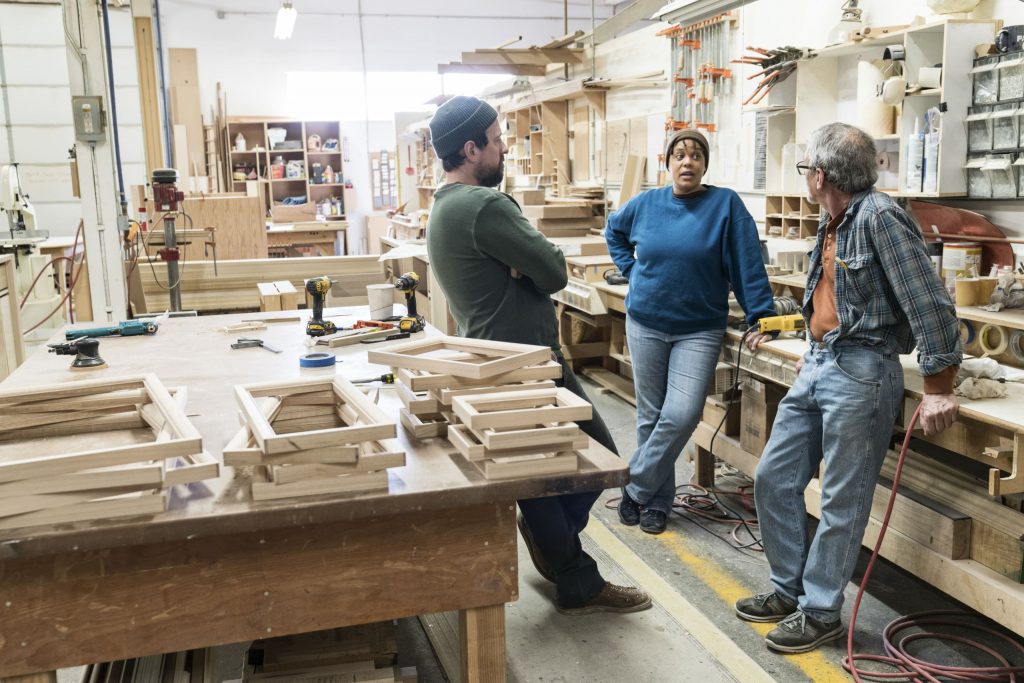When it comes to crafting your own furniture, the choice of wood is one of the most important decisions you’ll make. The right wood can determine the durability, appearance, and ease of working on your project — but for beginners, the world of lumber can feel overwhelming. Don’t worry! This guide will help you understand the basics of wood types, their characteristics, and how to pick the perfect material for your handmade pieces.
Why Wood Choice Matters
Wood is not just a raw material; it’s the soul of your furniture. Its grain, color, texture, and strength will influence the final look and function of your creation. Choosing the right type means your furniture will not only be beautiful but also sturdy and long-lasting.
The Two Main Categories of Wood
Wood is generally divided into two main categories:
1. Hardwoods
Hardwoods come from deciduous trees — those that lose their leaves seasonally. Examples include oak, maple, cherry, walnut, and mahogany. These woods tend to be dense, strong, and often have beautiful grain patterns. They are excellent for furniture that needs durability and a refined appearance.
Pros:
- Very strong and durable
- Rich colors and textures
- Takes finishes and stains well
Cons:
- Usually more expensive
- Can be harder to work with due to density
- Heavier weight
2. Softwoods
Softwoods come from coniferous trees, such as pine, cedar, fir, and spruce. These woods are generally lighter and softer, making them easier to cut and shape — ideal for beginners or lighter furniture pieces.
Pros:
- Easier to work with hand tools and machines
- Often more affordable
- Lightweight and versatile
Cons:
- Less durable, prone to dents and scratches
- Typically lighter in color and less dramatic grain
- May require more protective finishes
Key Wood Characteristics to Consider
When selecting wood for your furniture projects, keep these factors in mind:
1. Grain Pattern and Appearance
The grain can be straight, wavy, curly, or knotty. Some prefer a clean, smooth grain, while others love the rustic look of knots and irregularities.
2. Workability
Some woods cut easily and glue well, while others can be tough and prone to splintering. As a beginner, softer woods or fine-grained hardwoods like cherry or maple are great starting points.
3. Durability
Think about where your piece will be used. Dining tables and chairs need tougher wood than decorative shelves.
4. Color and Finish
Some woods have natural warm tones, like cherry’s reddish hue or walnut’s rich brown. Others, like pine, are pale and take stain well if you want a darker look.
5. Cost and Availability
Local availability can affect price. Sometimes choosing a locally sourced wood is more sustainable and economical.
Popular Wood Choices for Beginners
- Pine: Affordable, lightweight, and easy to work with. Great for shelves, simple tables, and decorative projects.
- Maple: Harder than pine but smooth and fine-grained, excellent for smooth finishes.
- Oak: Strong, durable, with a prominent grain. Great for furniture meant to last decades.
- Cherry: Beautiful warm tones and fine grain, ages gracefully with a rich patina.
- Walnut: Dark, elegant, and sturdy — perfect for statement pieces.
Tips for Buying Wood
- Buy Dry Wood: Avoid wood that’s still green or damp; it can warp or crack later.
- Check for Defects: Look for splits, large knots, or warping.
- Ask for Advice: Lumber yards and woodworking stores often have helpful staff who can recommend wood based on your project.
Final Thoughts
Choosing the right wood is an art in itself, blending your design vision with practical considerations. Don’t rush the process — spend time exploring different types, touching the textures, and imagining how the wood will come alive in your hands.
At Craft Furniture Workshop, we encourage you to start simple, experiment boldly, and most importantly — enjoy every moment with your materials. The wood you pick today will be the foundation of your creativity for years to come.

